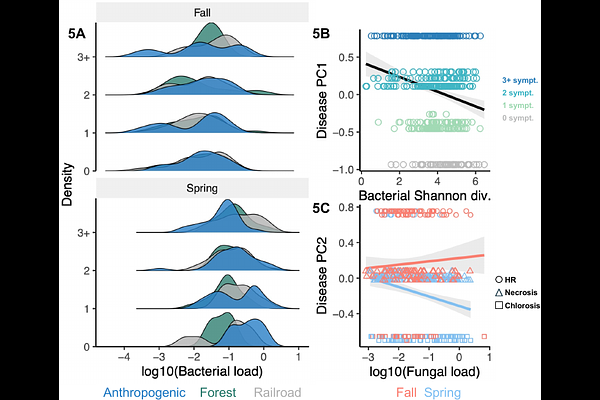Seasonality, land use, and diversity shape microbiome-pathogen interactions in wild populations of Arabidopsis thaliana

Seasonality, land use, and diversity shape microbiome-pathogen interactions in wild populations of Arabidopsis thaliana
Henry, L. P.; Rat, A.; Laderman, E.; Lion, R.; Mayjonade, B.; TEAM PATHOCOM, ; Roux, F.; Weigel, D.; Bergelson, J.
AbstractThe microbiome often protects plants against pathogens, but most findings are limited to controlled experiments in the lab. In the context of wild populations, one key challenge is to understand sources of variation that impact the commensal microbiome, which in turn shapes the degree of protection. Here, we surveyed both disease symptoms and microbiomes from wild populations of Arabidopsis thaliana over four consecutive seasons (fall/spring) across three different land use types. Land use types were stratified by anthropogenic influences and included forest meadows, human-impacted fields adjacent to agriculture or municipal parks, and highly disturbed habitats near railroad tracks. By building an integrative map of abiotic and biotic variables, we find that a key predictor of disease was biodiversity across ecological scales. Higher diversity plant communities reduced disease burden in A. thaliana populations but also increased diversity within the microbiome of A. thaliana. This increased microbial diversity was additionally associated with less disease in A. thaliana. However, the diversity-microbiome-disease relationships were all sensitive to season and further modulated by land use. Taken together, our work highlights the importance of anthropogenic change reshaping species interactions across ecological scales to impact disease risk in wild plant populations.